Types Of Art Glass – Stained Glass Sheets
Mục Lục
How To Choose The Right Art Glass For Your Projects
Stained glass sheets come in a huge array of colours, textures and transparencies. It can be hard to know which is best to use.
- Here you can find out about all the different types of sheets available for glassart.
- You can discover which sheets are best for each specific project and learn about the various ranges made by different manufacturers.
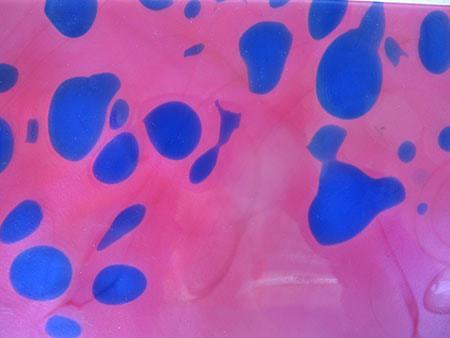
- Find out how to make stunning stained glass from the cheapest glass.
How? By layering it up together (plating).
Plating transforms even the most boring glass AND uses up all your ‘ugh‘ glass currently gathering dust on your shelves. See how to use glass to create limitless effects here
Jump down for ideas for cleaning dirty glass
Stained Glass Sheets
What are you looking for?
Light
If your main concern is maximising light and flooding your home with dancing colour, it’s Cathedral or German New Antique stained glass sheets you need. They are transparent and let light through.
Privacy
If you want to maintain privacy or don’t want too much light coming through, the best stained glass sheets for you are Opalescent or Semi-Opaque. That’s because light bounces off the surface and you can’t see through it directly.
Fusing
Fusing is a bit different. For this you will always need a special Fusible Glass, which can either be opaque or transparent.
To clear up a frequently asked question; you can use absolutely any sheets for making stained glassart, including Fusible sheets.
You can of course mix Opalescent and Cathedral in the same project with very exciting results.
Cutting Using the Grain of the Art Glass to Add Life to your Project
This video shows you how to use the glass grain to enhance the feeling you want from your panel.
In this example, I’m using green glass to cut the leaves of a flower. I want the grain to mimic a real leaf in nature as much as I can.
This video shows you how to cut the glass so the grain flows in the right direction. It also gives you some tips on how to avoid wasting glass.
Stained Glass Sheet Suppliers
Without question, it is always best to visit a supplier yourself and choose your own sheets if you can, as photos never, ever do the beauty of the individual sheets justice.
However, if there’s no stained glass suppliers near you, there are lots of stained glass suppliers who will ship glass to you.
It’s probably best to pick individually if you can, as there’s nothing worse than having too much of something that doesn’t excite you.
Cathedral and German New Antique Glass
Cathedral is an umbrella term used to describe a machine made glass (as opposed to Antique, which is mouth blown and consequently very beautiful and expensive).
It is transparent and comes in many textures and is usually, although not exclusively, made from a single colour.
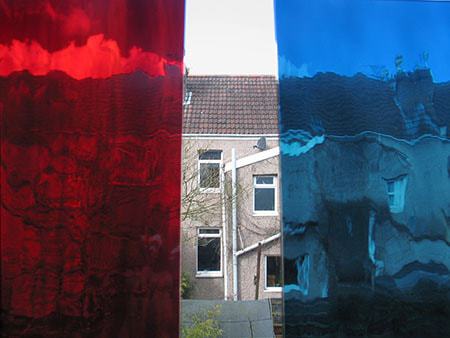
Cathedral sheets are especially good for beginners as they are uniform and very easy to cut.
There are many different manufacturers who make this type of stained glass, each with their own textures and specialities.
It might be worth having a look at Kokomo to see if you like their particular collections.
Spectrum make a huge range of cathedrals that are very reasonably priced, consistent and simple to cut. They also have unique textures to suit every design:
Waterglass (pictured above) with a distinctive gentle texture
Baroque (pictured at top) with dramatic three-dimensional coloured swirls and the Artique, that copies Antique blownglass with it’s irregularities
German New Antique is a little less dense than the Spectrum Artique and comes in a wide range of colours.
It has delightful striations that give it the appearance of being handmade. These are deliberate and there to be used to good effect.
Because it is machine made it has an even thickness, making it one of the easiest to cut.
Opalescent and Semi-Opaque Glass
Opalescent or Opal is glass that you can’t see through.
Semi-Opaque is usually a colour mixed with white or another colour, which allows you to partially see through it.
These sheets are perfect for projects that don’t need to be transparent – lamps, fire screens, wall art, and boxes.
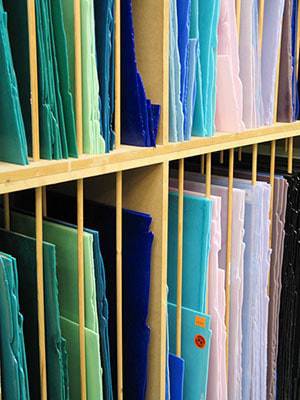
Opalescents can be amazing when put alongside Cathedrals, as the contrast between opacity and transparency seems to make the qualities of both glasses shout much louder.
Tiffany used a lot of this type of glass very, very skilfully in his stained glass windows and lampshades.
Uroboros produces some amazing premium handmade opalescents, with each sheet being an original work or art in itself.
If you can’t afford this, Spectrum’s machine-made range is excellent, covering single colour Opalescents to wispy and streaky Semi-Opaques (pictured above) that are shouting out to be used creatively.
Iridized and pearlescent sheets
These have a coating of metallic oxide bonded on to the surface, which make them shimmer and change colour depending on the viewing angle.
These sheets can lift a stained glass artwork, but are best not over-used as they can dominate a design.
Fusible Glass
The term Fusible Glass describes a range that has been specifically manufactured for compatibility so that it can successfully ‘fuse’ with other sheets during firing.
The measurement of this is the Coefficient of Expansion (CoE). If your glass is not compatible – or fusible – your stained glassart will contain stress and crack during or after firing.
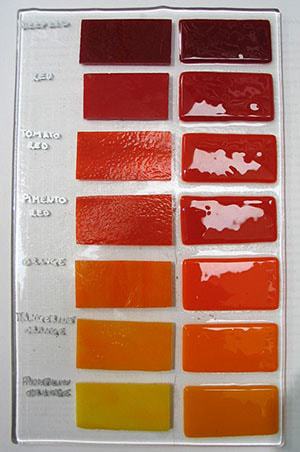
Bullseye
Perhaps the most successful manufacturers of fusible glass are Bullseye Glass. Their glass has a CoE of 90, and is compatible with both dichroic and Uroboros sheets.
Each sheet is hand rolled and they have stringent compatibility checks in place.
Depending on your project, you can choose either opaque or transparent.
Before you choose, think about whether you want the light bouncing off (reflecting) or shining through (transmitting). And then choose away – what Bullseye don’t make isn’t worth having – you can have single colours, streakys, iridescent, textured, chopsticks, streamers… I could go on!
If you use this for stained rather than fused glass, the single-rolled version – as opposed to double-rolled – is cheaper and just as wonderful.
Spectrum
Spectrum also does a Fusible Glass range called System 96.
They don’t have the same number of variations as Bullseye, but they are expanding all the time. System 96 sheets are very reliable, easy to cut and visually interesting.
It’s also cheaper than Bullseye. Only use System 96 for fusing, as the other Spectrum glass is not compatible.
Cleaning Dirty Old Sheets of Stained Glass
Some of us are lucky enough to get our hands on old stained glass sheets. Second-hand glass or old antique sheets that have been lying around a while can be pretty grimy and hard to clean. So how do you clean these dirty sheets of stained glass?
Ideas For Cleaning Grimy Stained Glass Sheets
There are many answers to this problem. Along with my own ideas, I’ve seen many over the years that I haven’t yet tried. Below you’ll see a list of all the suggestions I’ve gathered together in one place*. I’m sure one of these solutions will be the answer to your dirty glass problem!
It’s worth noting that I’d always soak the stained glass first, whatever method you choose. Also, be aware that the surface of the glass will scratch if a rough abrasive is used, so start with the less ‘scratchy’ ideas first and move up if needs be.
- Spray with vinegar. Let it set then spray again and clean off.
- Dawn soap, vinegar, and hot water.
- Caustic soda bath for really stubborn dirt (be very careful with this as its corrosive – wear gloves, use a mask and do in a ventilated space). Do not inhale it.
- Whiting powder method (one of my favourites):
Don’t use this method if any of the panels are painted with semi-permanent artwork as this may rub it off.
Whiting is a little abrasive so be mindful how hard you scrub.- Lay the glass sheet flat on your work surface
- Sift a thin, covering layer of whiting all over the panel
- Take a spray bottle of water and mist it over the whiting until you make a paste
- Let it dry, and then take a natural tampico bristle brush (NOT nylon), and start scrubbing. The abrasiveness of the whiting will polish off the grime
- Make a paste of baking soda. Then you can add vinegar and let it bubble before scrubbing and washing off.
- Spray with diluted Simple Green. Let it sit for a bit then sprinkle with sawdust and scrub it up with a plastic scrubbing brush.
OR: clean in a warm bath of Simple Green. Then use a stainless steel wire brush to gently clean it off. Additionally, you can use a small amount of comet cleanser on the brush for the tough spots.
I’d use this one with caution as it’s the most abrasive – you could try a toothbrush rather than a wire brush. - Make a mix of soapy ammonia – e.g. Sudsy Ammonia – mixed with water & detergent. Scrub in little circles with a toothbrush.
- Apply a degreaser then scrub and polish. You can get citrus, non-chemical degreasers that are less dominant. They may not work as well as a regular degreaser but are a lot nicer to work with and far less smelly.
- Mr. Clean Magic Eraser plus elbow grease! This is especially good for black patina stains.
- Distilled water and dish soap – e.g. Seventh Generation Natural Dish Liquid. Use a damp soft cloth soaked in the solution to gently clean. You can use a Q-tip cotton bud to get into ridges and corners.
This is unlikely to get stubborn grime off but is a neutral and safe suggestion for more delicate or precious glass.
*Thanks to you if you recognise your contribution 🙂
Helpful Resources
You might find this 3.5 minute video helpful for identifying the different types of stained glass sheets available. It always helps to see them for real:
Here are the company’s websites if you’d like to see the full range of sheets they sell.
Kokomo
Spectrum
Uroboros via Oceanside

Tips for Working with Textured Stained Glass
There are 3 different ways to work out how much glass you need here.
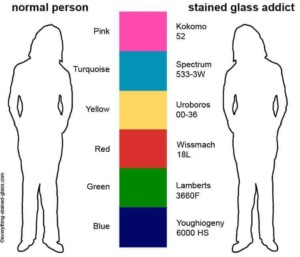















![Toni Kroos là ai? [ sự thật về tiểu sử đầy đủ Toni Kroos ]](https://evbn.org/wp-content/uploads/New-Project-6635-1671934592.jpg)


